Crowds of crows scream at me as I try to reach Jošt’s studio, it drizzles and I press my earbuds into my ears to move somewhere else—momentarily.
Driven by an interest in photography, Jošt’s practice fluidly moves into installation, video, and sculpture. His works are slow and hard to fully experience. He has made long videos where almost nothing happens; framed prints disturbed by mirrors that prevent the viewer from entirely enjoying the photograph; screen printings with sand that disintegrate over time; and black objects hanging on a black wall in a black room. His works touch upon time, perception, and uncertainty.
Soon I reach his studio at NEJD, an artist-run initiative in Ringön, one of Gothenburg’s industrial areas. He welcomes me with a hug, a nice relief after those angry feathered creatures. We settle into conversation over coffee, putting some music on while we chat to keep the energy flowing—two Pisces in the same room can otherwise get a little too mellow.
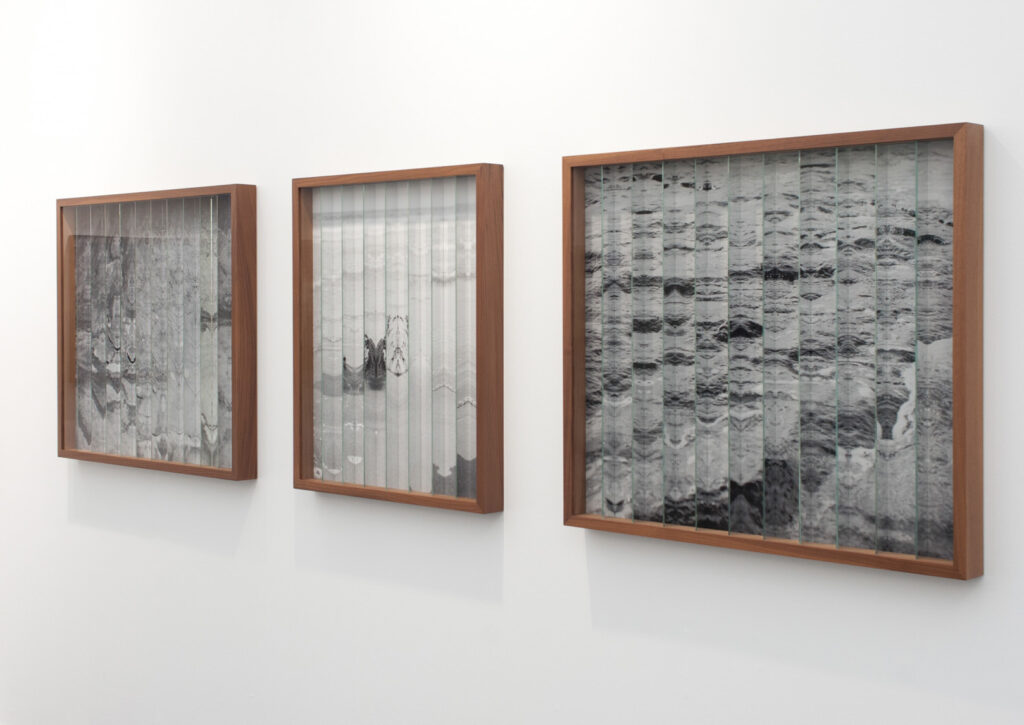
Archival ink-jet prints, custom made walnut frames with 2-sided mirrors, sound.
2019–2021
The first time I saw your work was in 2020 at Landskrona Fotofestival, where you were exhibiting “To Move the Sun and Earth Away”, a piece intertwining photographs and mirrors. How has your practice evolved since then?
At that time, my practice was much more paper-based. Later on, I have started printing on other materials and exploring new ways of presenting my work. For instance, I have been experimenting with UV printing on aluminium and screen printing with sand. But I also made video works. I enjoy having the freedom to try new possibilities and expand my work in many directions, using different media and materials.
Your materials have changed, but what about the topics you work with?
I am still very much concerned with time and perception. In “To Move the Sun and Earth Away” I was working on perception based on space. The mirrors in front of the photographs blurred a direct view of the images, yet allowed innumerable perspectives of the photographs. By moving around, the perceived image changed due to reflections in the mirrors. To fully grasp the images, one had to explore them first. On the other hand, in “Sand Piece” I was working on perception based on time. Since the image gradually deteriorates, two encounters with it are never the same. I like to think about exhibitions as fluid, unpredictable events, where things can change.
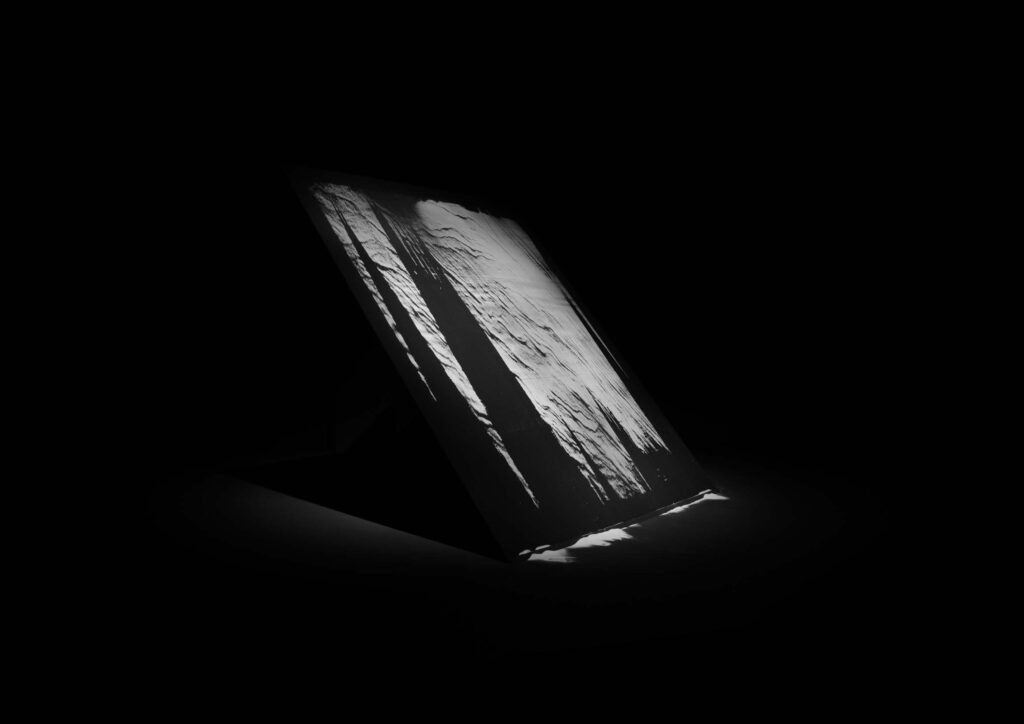
Screenprinted photograph with white sand, wood, time triggered mechanism
(arduino, stepper motor, linear actuator). 2023.
I really want to know, where did you get the inspiration for “Sand Piece”?
I don’t know exactly. I was intrigued by the sand in connection to the notion of uncertainty because it’s a material in between being stable and having a fluid form. Then I asked myself, “How could I print with sand?”. It was a very new and specific idea for me, and I wasn’t sure if it would work either.
Uncertainty seems to be another important concept in your practice.
Definitely. In the last few years I have been interested in uncertainty of perception, duration, and change. And that reflects of course in the materials used in the process. Before that, I was doing more traditional photography, but then I realised that if I wanted to work with uncertainty, the works themselves also had to be uncertain.
How was it screen printing with sand?
Super uncertain and unpredictable! I needed quite some time to get to know this method. The sand would go everywhere, I had to redo it so many times. Often the image wouldn’t come out, or parts were missing. There are imperfections every time I print it, so in a sense “Sand Piece” is both time- and site-specific.
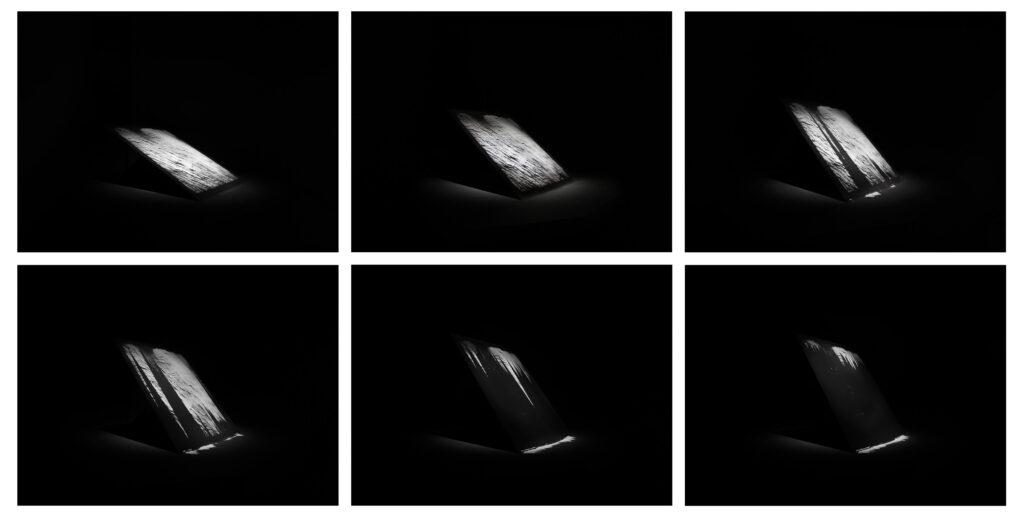
You screen-printed it and left it in the exhibition space for three weeks, while it was slowly tilting and disintegrating. What expectations did you have when you installed it?
Honestly, I finished the tilting mechanism one week before the opening, so I didn’t really have time to run a 3-week test. I knew it was working as it should, so I just left it there to do its own thing. Yet, I couldn’t know exactly how it would affect the sand-printed image, or at what rate the decay would happen. I checked on the exhibition every now and then, also to document the disappearing process.
Were you there when the image disappeared completely?
I couldn’t foresee it, so of course I missed the very first change, I didn’t know when it would happen. I expected it to happen in ten days, but I think it took two weeks for the decay to become visible. There were so many factors I didn’t have control over, like the humidity of the room, the ventilation, and if people stepped very close to it and touched it.
I like how in your practice, you often lose control over your works.
I think I’m exploring how to lose control, and at the same time how to make space for chance and let it impact the works on different levels.
Feels like you give yourself some rules for this to happen; you build a framework to facilitate chance. I think about the decision of putting in a tilting mechanism, or of ending the video when the stone comes out of the frame.
In a sense, I organise different elements that I put together, but deliberately leave some empty space for chance. Then I move away and leave the artwork and the materials to create relationships and influence each other. Those relations between different parts then contribute to what eventually becomes the final outcome.
How do you feel when you do that?
When I step back? I just trust the artwork in doing its own thing without having to be present controlling the chain of events that will play out. It is also exciting for me to witness this transformative process.
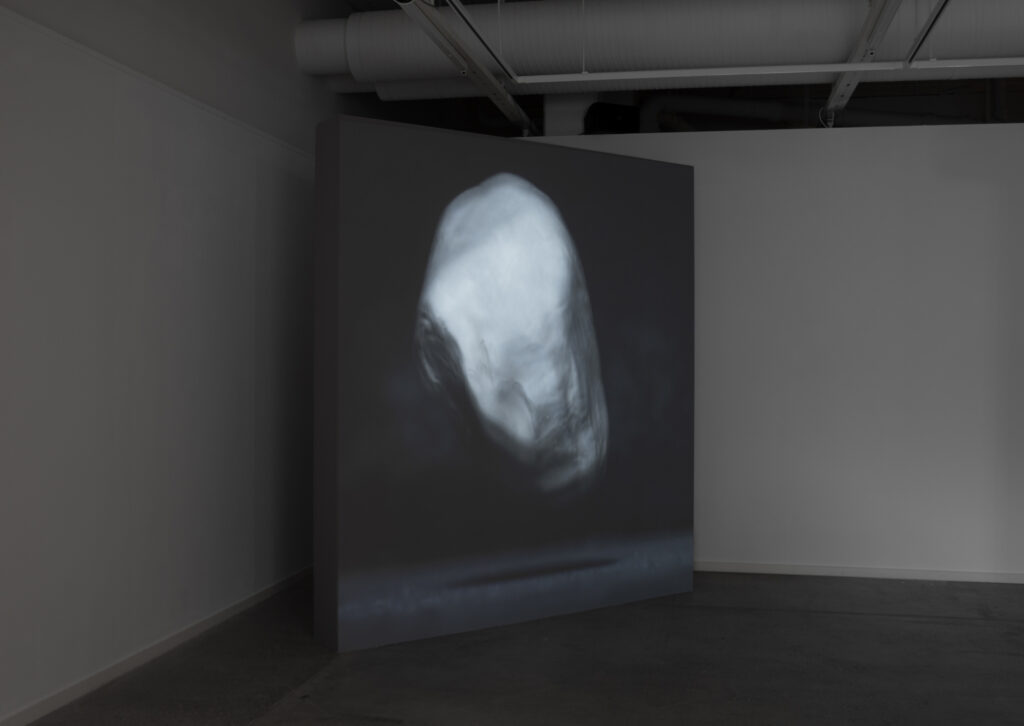
2K video, 46’ 12’’. 2022.
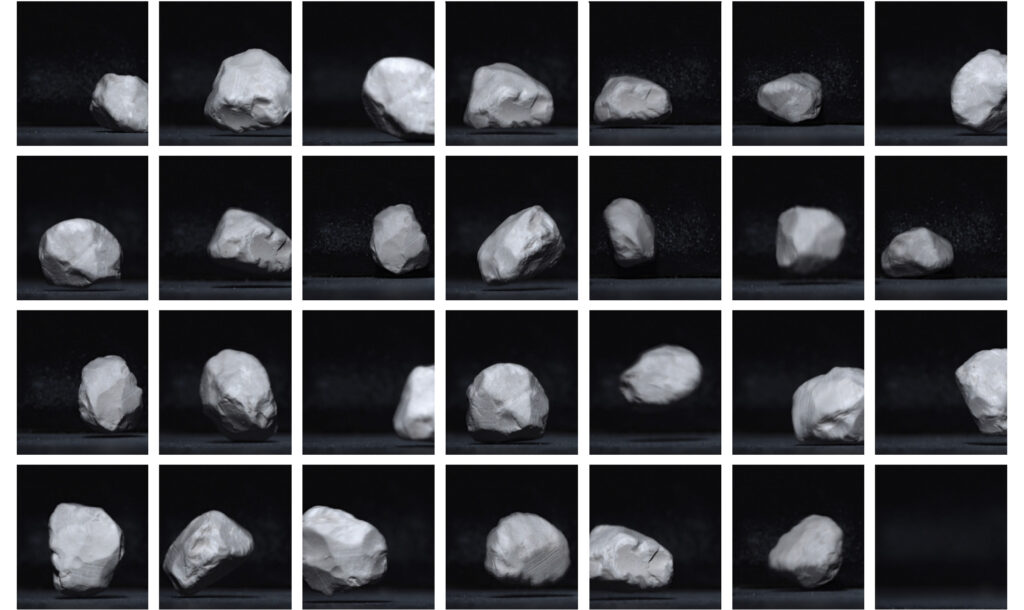
Another aspect that interests me in your practice is that you often play with the viewer by presenting works that are impossible to fully experience. I think about the mirrors that disturb the image, the 45-minute video where nothing happens that I will never watch entirely, or “Sand Piece” that changes its form in a three-week time span.
That’s true, actually. I think with my work I want to express that we can’t get everything. The reality is too complex, too large for a human being to grasp. It is erratic and even if we try to impose order, chaos is repeatedly existent. There’s always some kind of barrier or personal bias that makes our perception always incomplete. Nothing is neutral or definite about it.
What interests you about photography?
I work with photography as an act, thinking about what it creates afterwards. I don’t really work with representation.
But you’re still representing things through photography.
Yeah, in a certain way, this is of course also a representation. But at the same time, I’m more interested in all the relationships that the artwork creates, the questions it raises on continuity, plurality of perspectives, and so on.
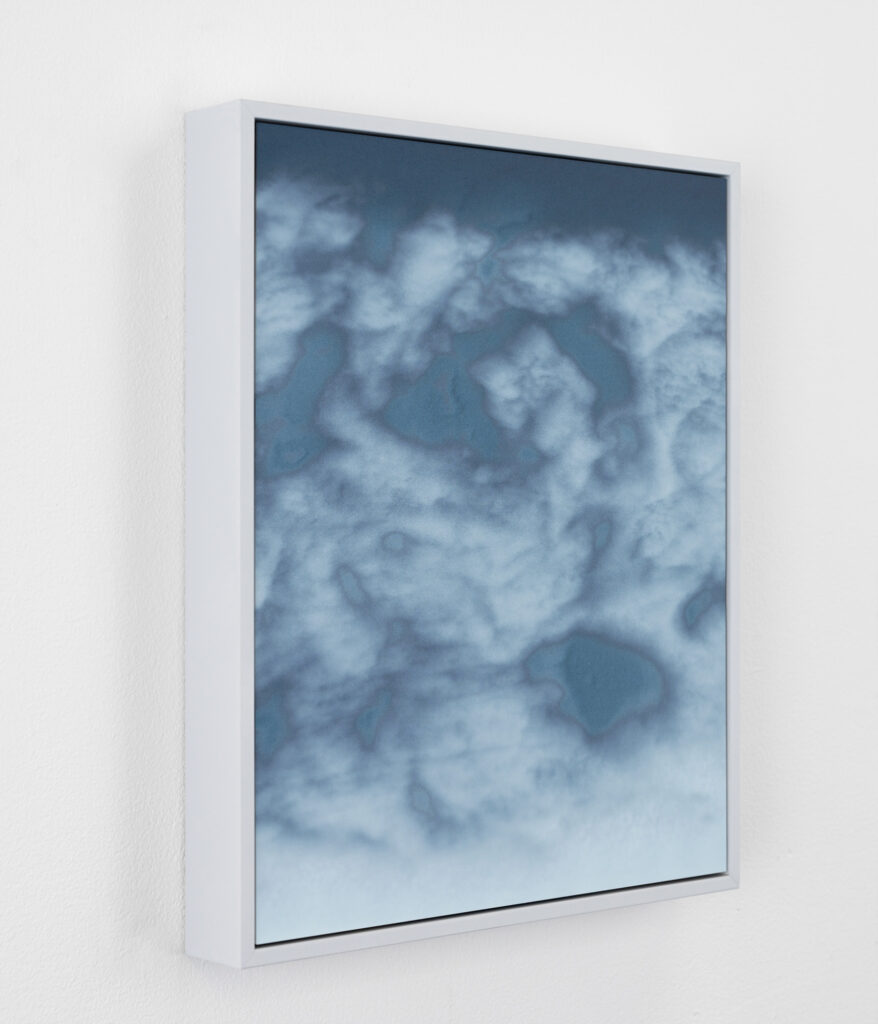
UV relief printed photographs on anodised aluminium, framed. 43 x 35 cm.
2024–in progress
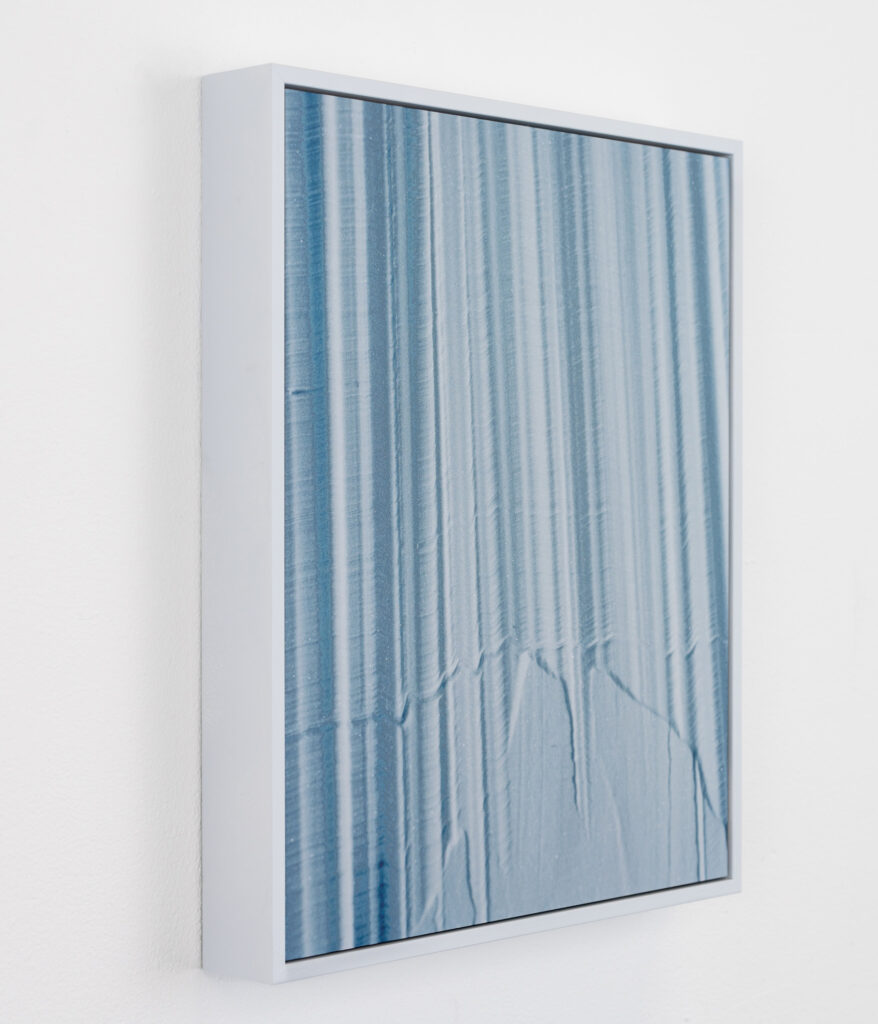
So you use photography thinking about how it is placed in the exhibition space and how it will be perceived by the viewer.
Exactly, my main interest for now is working with exhibitions and installations rather than books.
I get that. Working with books often means dealing with linearity and narratives. And I think your works reject any kind of linear narrative.
Oh yeah, I don’t work with narratives at all. You know what? I think I’m a horrible storyteller. It’s just not natural for me. My approach is largely nonlinear and is intertwined with different methods and materials, everything happening at the same time. There is a lot of experimentation and figuring out the relations among, for example, materials, technology, duration, chance, and so on. But it always starts with a certain idea or question, and only after some time I start working with physical materials. During the whole process, which usually takes months, the idea mutates and results in multiple outcomes. Those artworks are both individual and very related, as they stem from the same conceptual background.
Future projects?
I’ll have a solo exhibition next year at Galleri Image in Aarhus, Denmark. I’m still not completely sure about what I will show, I want to use my time to also create some new works. I started doing some research on sound and vibration, investigating how not to use sound in, let’s say, semantic and rational ways. I would like to strip that away from the sound and use only its physical power, its vibrations, to move things. We’ll see.
Exciting! Finally, what do you know about the contemporary art scene in Italy?
I know about some magazines and exhibition spaces. For example, I really like Materia Gallery in Rome.
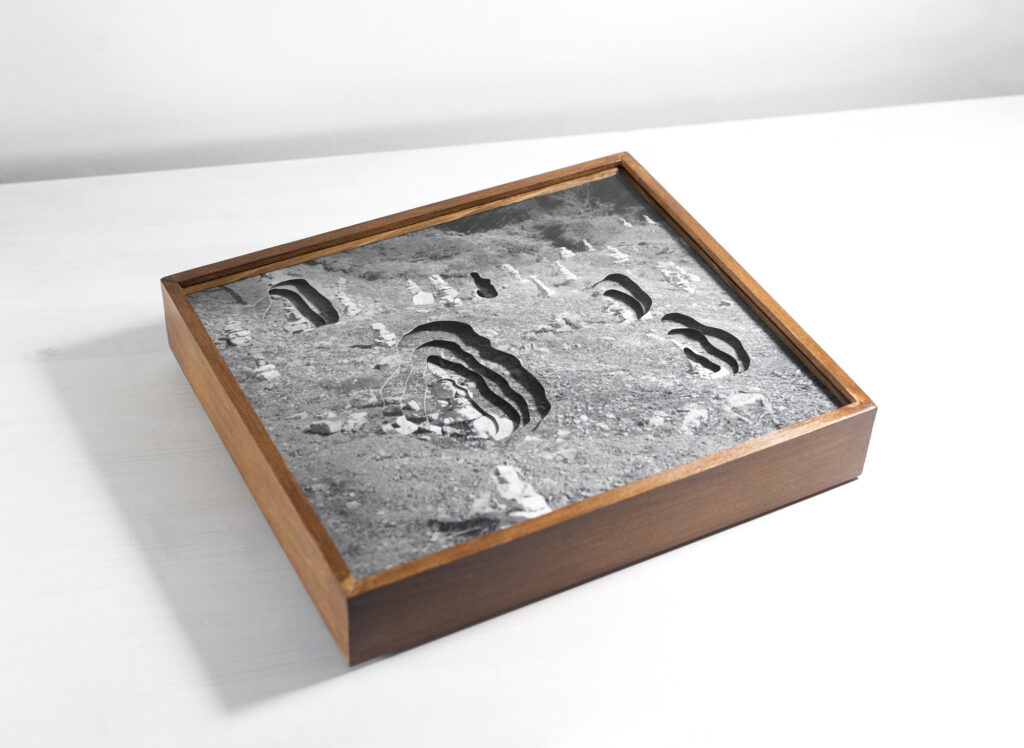
Photographic object. 2021.
Jošt Dolinšek (1997, Ljubljana, SI) is a lens-based visual artist living in Gothenburg, Sweden. He holds an MFA in Photography from HDK-Valand, Gothenburg, and a BA in Psychology from the University of Ljubljana. Recent exhibitions include NEJD (Gothenburg 2024), Fotografie Forum Frankfurt (2023), Röda Sten Konsthall (Gothenburg 2023), Galleri Format (Malmö 2022).
www.jostdolinsek.com
Interview by Stefano Conti
Images by Jošt Dolinšek
Portrait by Nastja D. Utrosa

